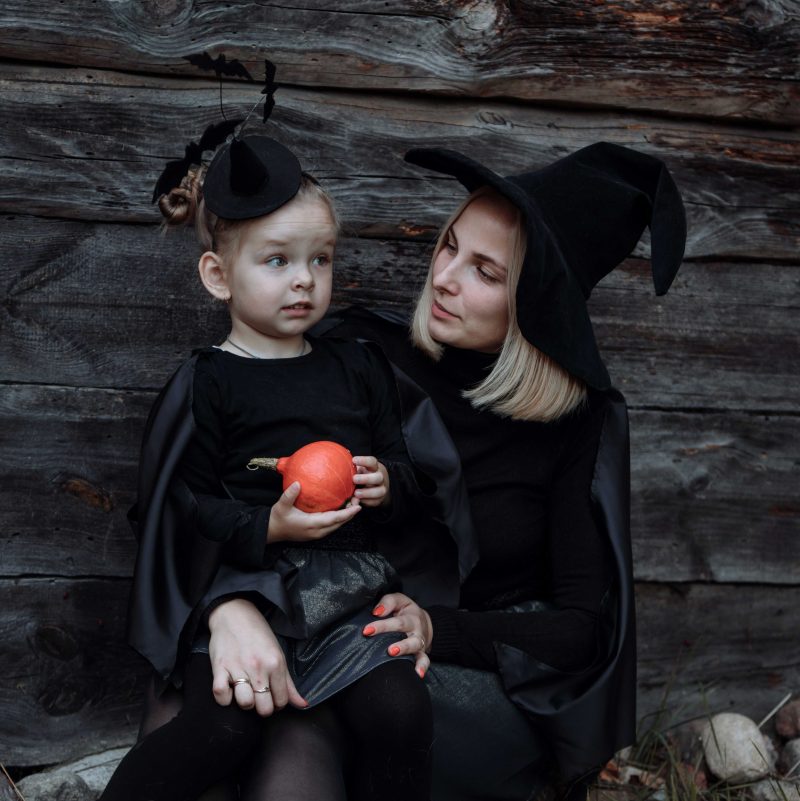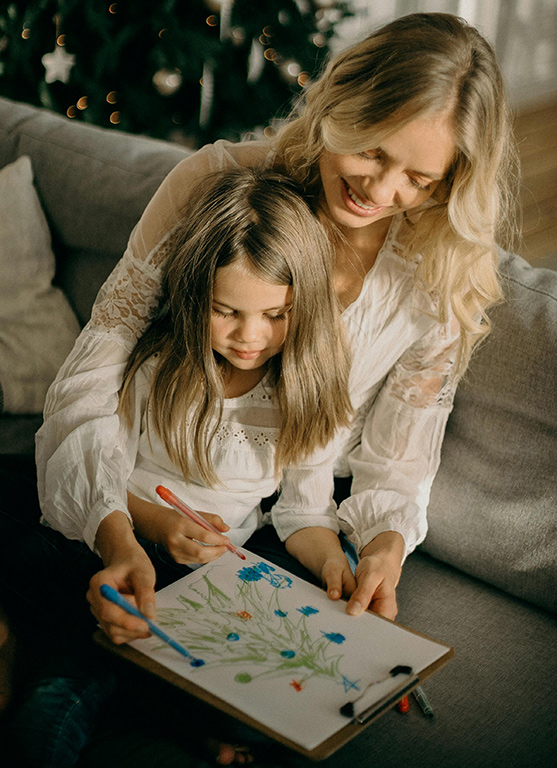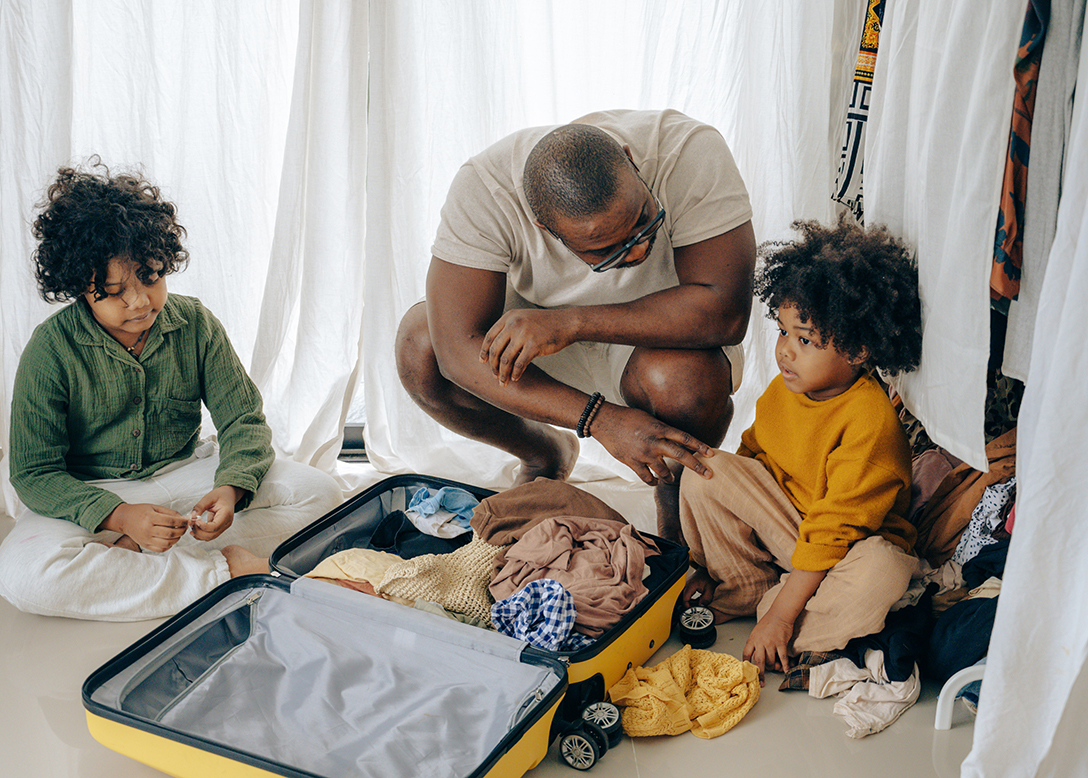by Martha Tyler
This time of year can be overwhelming for our littlest ones. Just walking around your neighborhood can be full of jump scares, loud noises, and haunting images. Your little one can go from laughing and having a great time to inconsolably crying within seconds. And you, as the caregiver, are left feeling frustrated and deflated. So how do we compassionately show up for our kids during this season?
Scared or Overstimulated?
This is the first and most important step in helping your child feel calm. If your child is having a hard time at a Halloween outing, are they scared or overstimulated? A good way to tell the difference is to run through this quick checklist:
- Have their basic needs been met? Feeling tired, hungry, thirsty, or off their normal schedule has a huge impact on their window of tolerance for fear and sensory overload.
- Does your child struggle with loud noises or bright lights at other times? If so, their fear or tears may have more to do with sensory processing than feeling scared of Halloween.
- What is your child telling you about their fear? Are they saying one thing in particular feels scary or is it a general fear of Halloween decor and themes?

If you find that your child is missing one of those basic needs, try again when they are less tired, hungry, thirsty, or have had time to adjust to a new schedule. If sensory processing seems to be part of what is stopping your child from enjoying this season, it might help to offer them noise blocking headphones, sunglasses, and/or breaks in the car or a quiet room. Headphones and sunglasses can be incorporated into their costume if they don’t want to be singled out. Now, what if they are not overstimulated, but they are still terrified to walk around outside during spooky season?
Using Curiosity
One of the all-time best defenses against fear is curiosity. Shining a light on what feels scary can go a long way to help your child feel more comfortable. Having a conversation about fear can only work when you and your child are calm. When your child is calm and feeling safe, you can start the conversation with “I’ve noticed you talking about being scared a lot more recently. I’m wondering what is feeling extra scary right now?” Help guide your child to better understand exactly what feels scary. Most fears cannot be overcome until they have been heard. Sometimes kids do not even have the words to describe their fear. By being curious and staying calm as you talk about fear you can offer your child not only helpful vocabulary, but also a supportive space to talk through their fears. Once you have a better understanding of the root of your child’s fear, now you can support them in befriending their monster!
Befriending the Monster
Even though we sometimes want to protect our children from feeling anxious, it’s really important to help them find safe and fun ways to face their fears. This empowers them to work through the fear so that it can’t grow to be overwhelming anxiety later. Children learn through play in all sorts of ways. And, when it comes to conquering fear, play is the best way to work through fear. Try some of these methods to help your child find the fun in Halloween again:
- Go trick-or-treating with your child’s friends. Seeing friends doing the thing your child feels scared to do can be so helpful in getting buy-in from your child. They see how they can go trick-or-treating by observing their friends do it first. If at all possible, try to organize with the parents of your child’s friends.
- Play games in the dark. Flashlight tag is a wonderful way to allow your child to experience fun in the dark with friends. Or the board game Shadows in the Forest can only be played in the dark but isn’t intentionally scary. Hide and seek can also help children deal with some fear, and you can offer to play in teams if your child is telling you they are scared of hiding by themselves.
- Make it silly. Encourage your child to really look at what scares them. They can be far enough away to feel safe. Then offer a way to turn it silly. If it’s a skeleton, “How does that skeleton even walk? It doesn’t have any muscles!” You can really sell this by moving your body in a silly way like you don’t have any muscles. Or imagine what that werewolf would look like in a beautiful tutu!
- Empower your child with a phrase. You can also offer a phrase for your child to say to the scary things they might encounter. Something as simple as “NO THANK YOU, MONSTER! I AM NOT SCARED OF YOU!”
- Read books to scary things. You can find specific books about what your child is feeling afraid of at your local library. Here are some suggestions to get you started:
-
- My Monster and Me by Nadiya Hussain (Author) and Ella Bailey (Illustrator)
- Gustavo, the Shy Ghost by Flavia Z. Drago
- Leonardo, the Terrible Monster by Mo Willems
- Brave Molly by Brooke Boynton-Hughes
Take heart, caregiver! Even if your child feels too overwhelmed for this year’s festivities, they are still growing and there’s always next year! Building fear tolerance can be done all year round and we’re happy to offer a troubleshooting call if you’d like more support. Happy Halloween!


